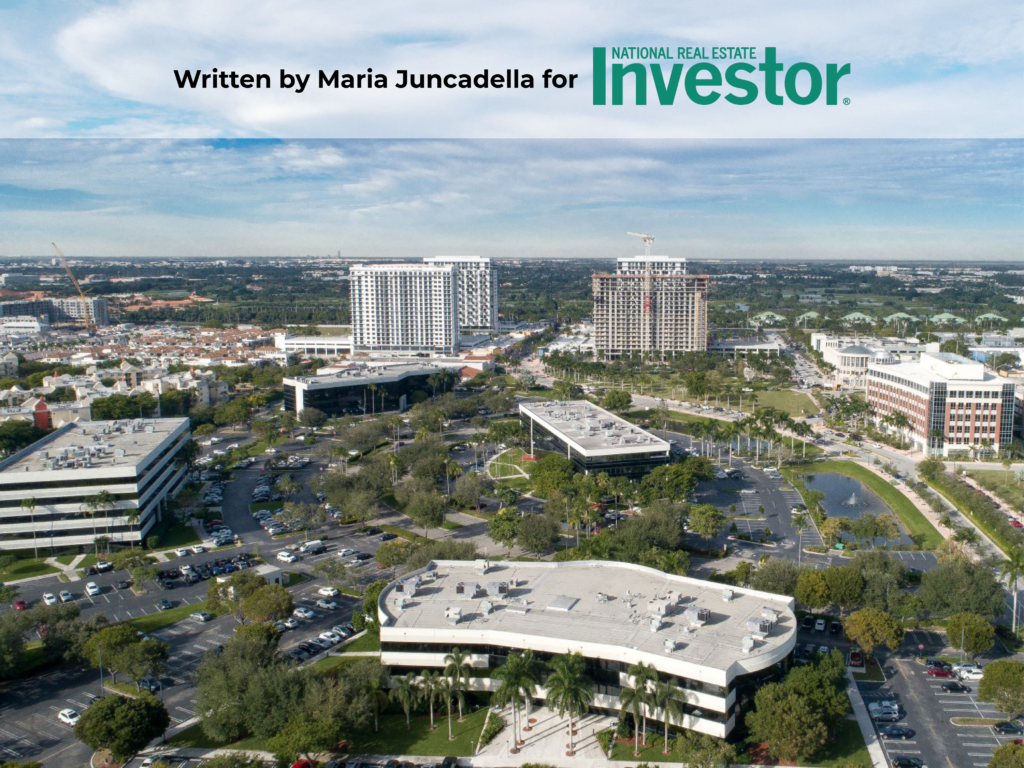As featured in National Real Estate Investor, “Office Space Midyear Outlook: The Case for Office Parks in Campus Settings,” July 31, 2019.
Office Space Mid-Year Outlook: The case for office parks in campus settings
The low unemployment rate across the country has positively impacted the commercial real estate market by driving down vacancy rates and contributing to rising rents, including rents for office space.
The fact that almost 200,000 jobs are being added each month in the United States underscores the economy’s vigor, creating considerable opportunities for real estate developers and investors. With half of the global working population being made up of millennials by 2020, it’s essential to consider the needs of the next workforce generation to attract and retain tenants and capitalize on the booming office sector.
Millennials put a heavy emphasis on their workplace. Close to 80% of them see workplace quality as important when choosing an employer and 69% are willing to trade other benefits for a better workspace, according to CBRE. What seems to attract millennials to one workplace over others is the availability of amenities.
In the past, developers and property owners set aside approximately 3% of space for amenities. Today, it is recommended that owners allocate no less than 10-12% to these convenient features, according to research by Colliers International.
One of the best ways to optimize amenity space and offer the most cohesive, well-planned amenities is through an office campus setting. A campus with multiple office buildings versus one stand-alone building allows developers to incorporate tailored and more diverse amenities that can result in increased rents, higher quality tenants, increased deal velocity and improved tenant retention.
Millennial-friendly amenities can include fitness centers with showers, green spaces, gathering areas with Wi-Fi within and surrounding the buildings, a game room, conference and seminar rooms, charging stations for electric cars, healthy food options, car washes, rooftop or outdoor workspaces, dry cleaning, lactation rooms, daycare and convenience stores. As the “work-life blend” mentality continues to rise in popularity, these amenities are imperative.
Location also continues to be a key amenity. As urban core rents rise, we are seeing businesses move out of the traditional downtown skyscrapers and shift to offices in non-traditional office markets. The latter accommodate more spacious workspaces and give employees additional options for more accessible, affordable housing and good schools, which are paramount to a wave of new families.
In addition, as businesses grow and technology impacts the work space, tenants can choose from a wider range of future space alternatives available within an office campus.
For example, The Offices at Downtown Doral has a campus setting in the middle of Miami-Dade County with 1 million total sq. ft and is thriving with a vacancy rate of about 6 percent, which is well below the average in Great mimia of 15.9 percent. This is a prime example that the office campus offers tenants additional advantages.
With convenience becoming a major priority for the workforce, a true live, work, play and learn lifestyle isn’t just a desire for millennials anymore, it’s a necessity. Campus offerings in urban settings present tenants with the ideal balance of amenities and convenience, and are establishing themselves as the wave of the future in the workplace environment.
Written by Maria G. Juncadella, CCIM SIOR MBA

